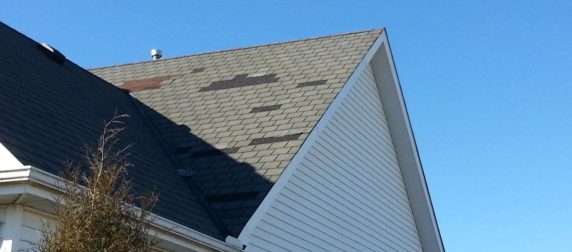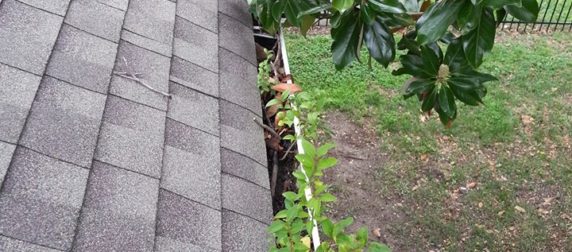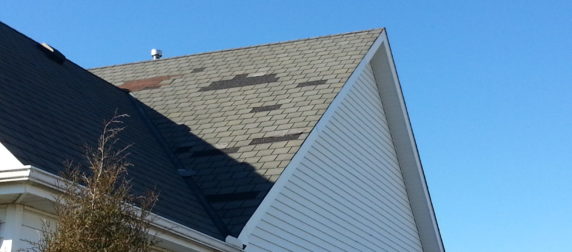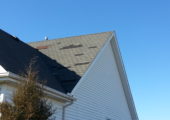- Visually inspect your roof
What type of roof system do you have? Check for loose, missing, or curled shingles and shakes. For slate, metal, and tile, look for missing or loose areas. Also check around your roof at branches that overhang or touch your roof, and leaves or plants visible out of your gutters. Any loose roof material can blow off from high winds, and uncovered roof deck from missing material can cause leaks.
- Inspect your siding and fascia
Loose siding or fascia can be blown off during a storm, while missing either one can cause severe leaks. Either missing siding or fascia will cause leaks and should be addressed as soon as possible.
- Clean out your gutters
Have a professional roofing contractor, gutter cleaning service, or get up there yourself to check out your gutters and clean them out. Gutters that are overflowing can cause water to back up and cause a leak. They also may become so heavy that they sag and eventually collapse down. If you do not have gutters, you may want to check where water runs off your roof to be sure it’s not damaging your foundation.
- Look around your yard
Look for bits or whole shingles laying on the ground. If you can’t see all of your roof from the ground, finding parts of your roof on the ground can help determine any damage. Inspect the ends of your downspouts to see if there is a large pile of shingle granules. If so, your roof may have significant granule loss due to aging. As shingles age, they lose strength and flexibility, making it easier for them to blow off during strong winds.
- Check your trees
Tree branches that overhang your roof too closely can scratch and puncture your roof during a storm. Having your tree branches trimmed at least 5 to 10 feet away from your roof and your house can help prevent damage. Also, inspect the trees surrounding your house, both in your yard and your neighbors. Look for dead wood, hollow spots, and bare branches. If the tree is unhealthy or dead, it could come down in a storm and cause obvious damage.
- Have a professional roofing contractor inspect your roof
Make sure to hire a reputable roofing company to inspect your roof. They should look for any loose or missing material, seal any exposed nails, and ensure all pipe vents, heat stacks, chimneys, dormers, and skylights are properly flashed and sealed. The ridge and any ridge vents should be secured and any exposed nails sealed. If there is a valley, it should be checked to be sure that the shingles are all secure and the valley is not obstructed. If there is any damage, that should be fixed immediately.
- How’s your home insurance?
Nobody wants to pay for insurance each month, but it’s always best to have it when you need it. What type of insurance do you have? Does it cover hail, water, wind and storm damage? Do you have ACV, actual cost value, or RCV, replacement cost value? ACV is the amount of the item, minus the depreciation of the original. RCV is the amount of the item, minus the depreciation of the original, but you get a check for the recoverable depreciation after completion. Check with your insurance agent to make sure your policy covers you in every way that you might need it.







Comments are closed.